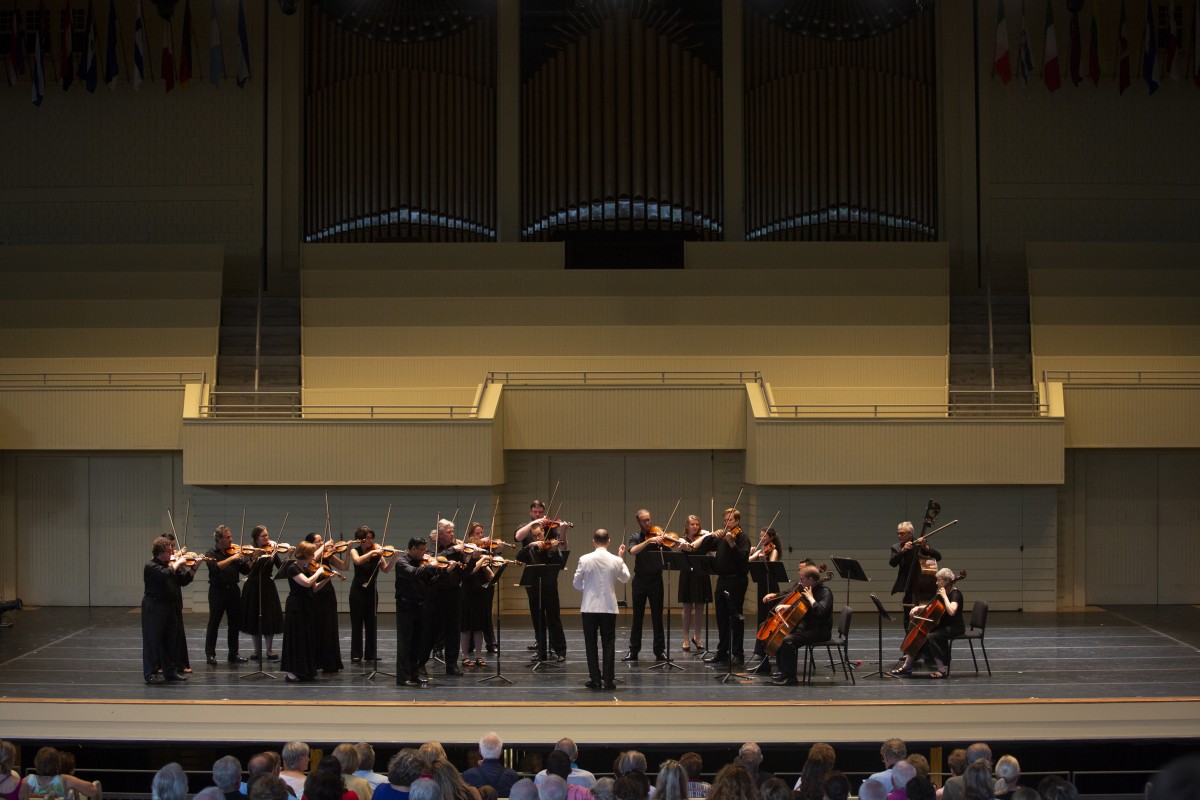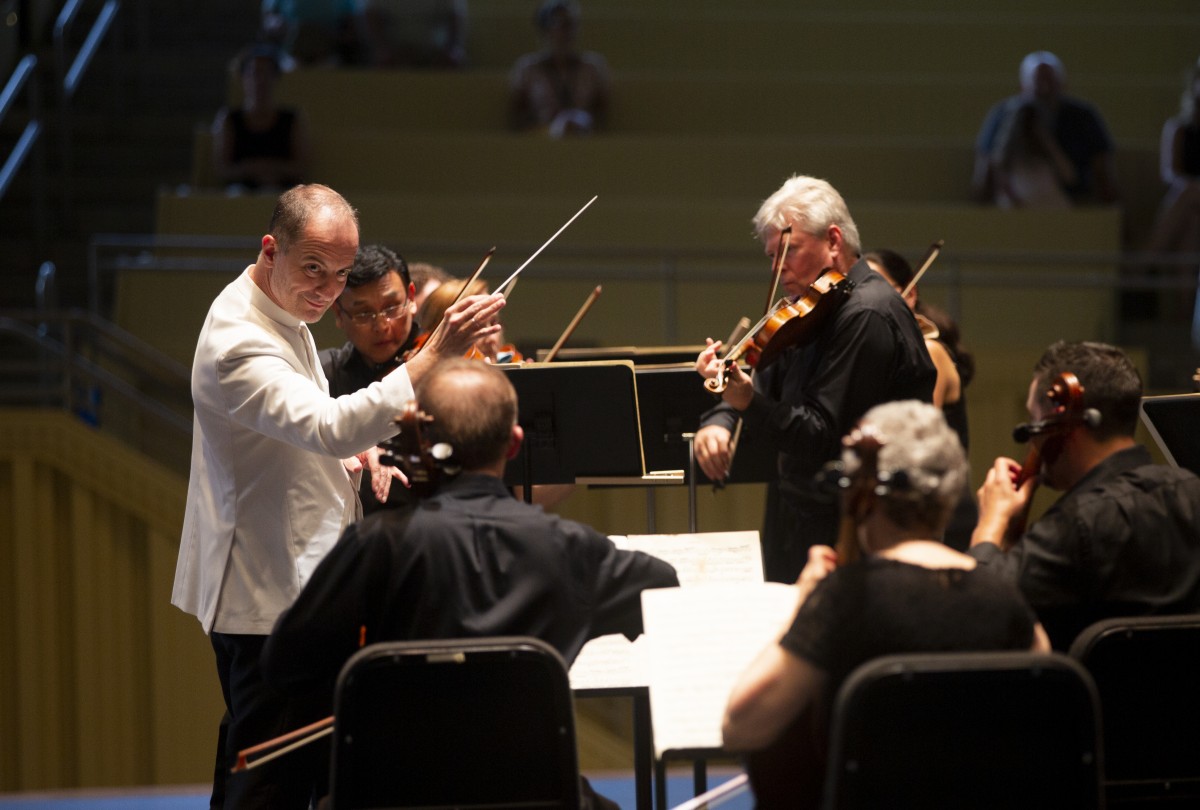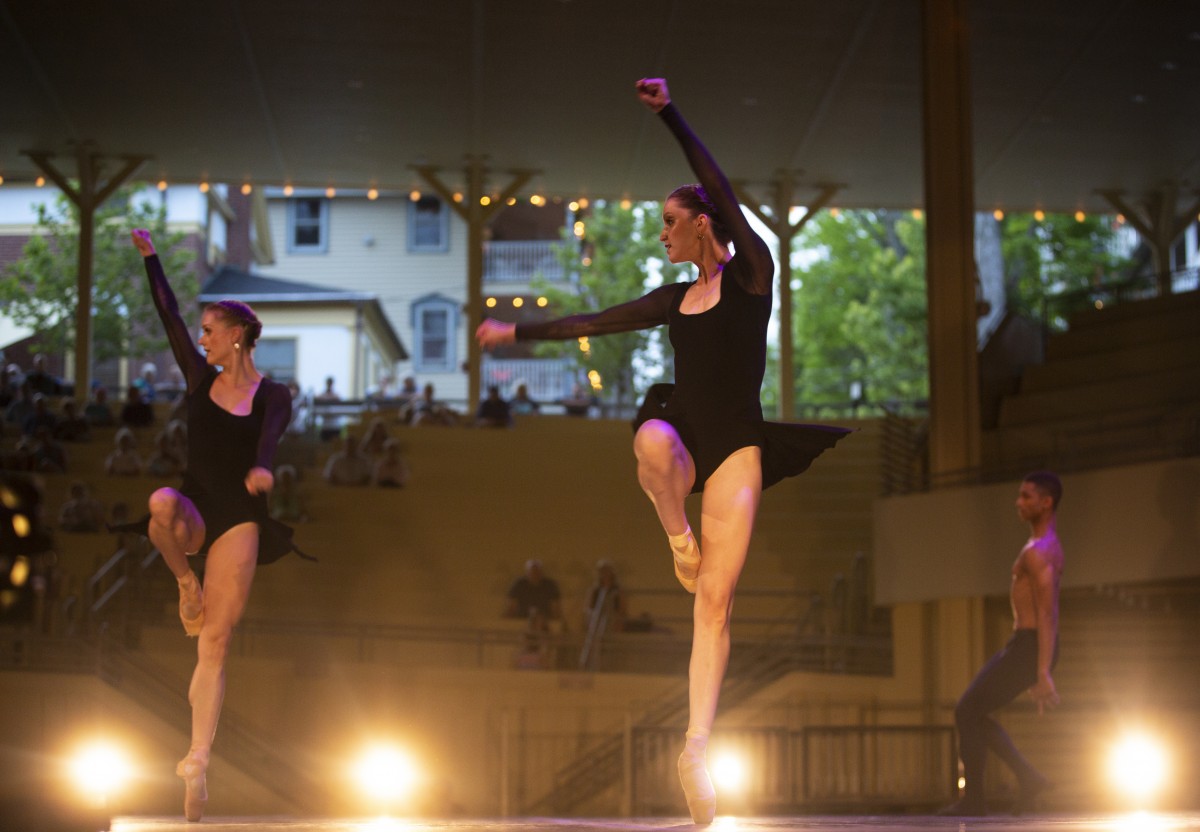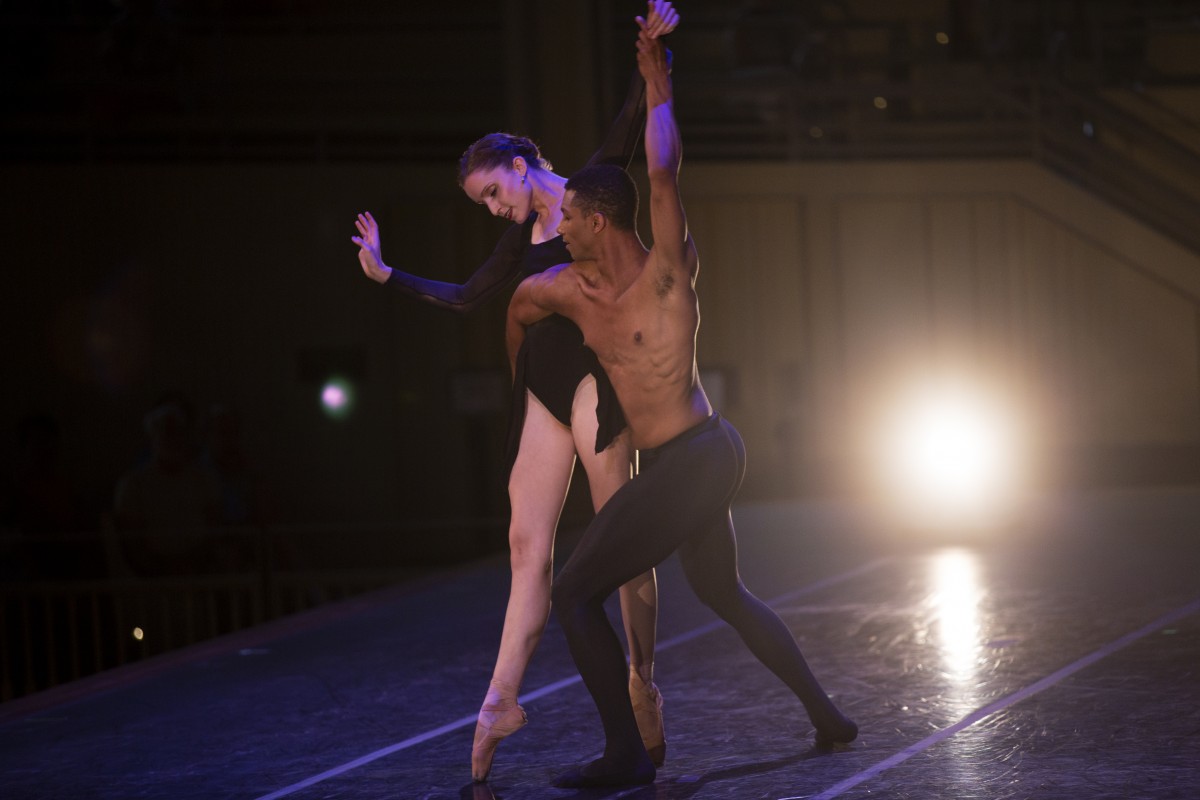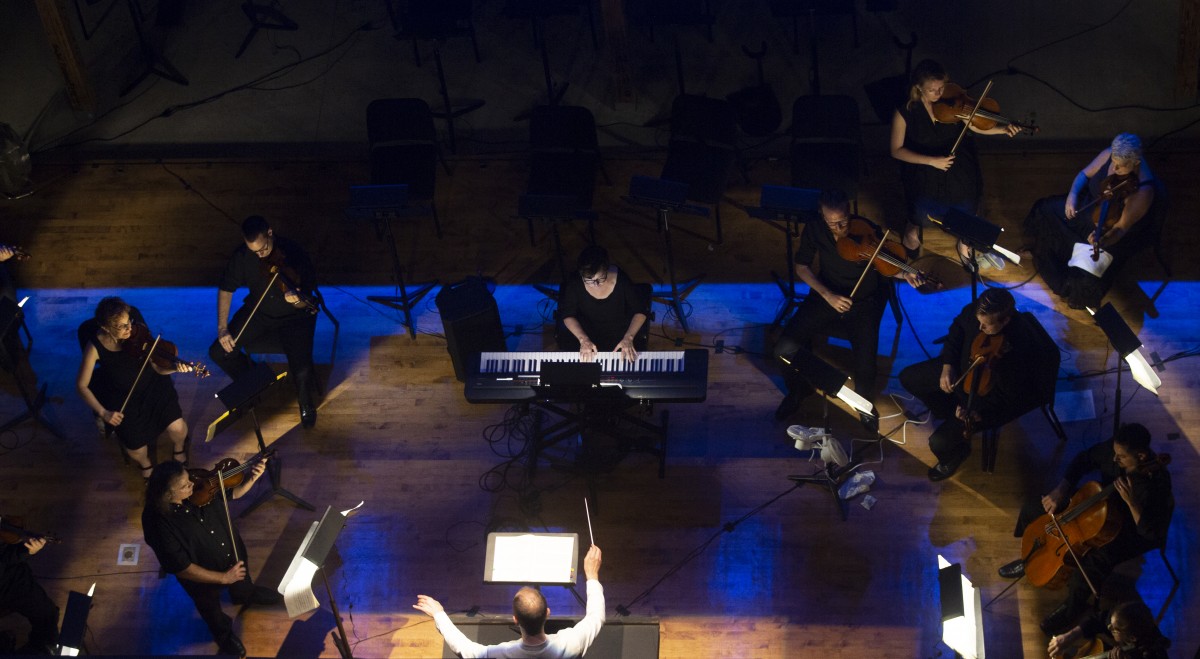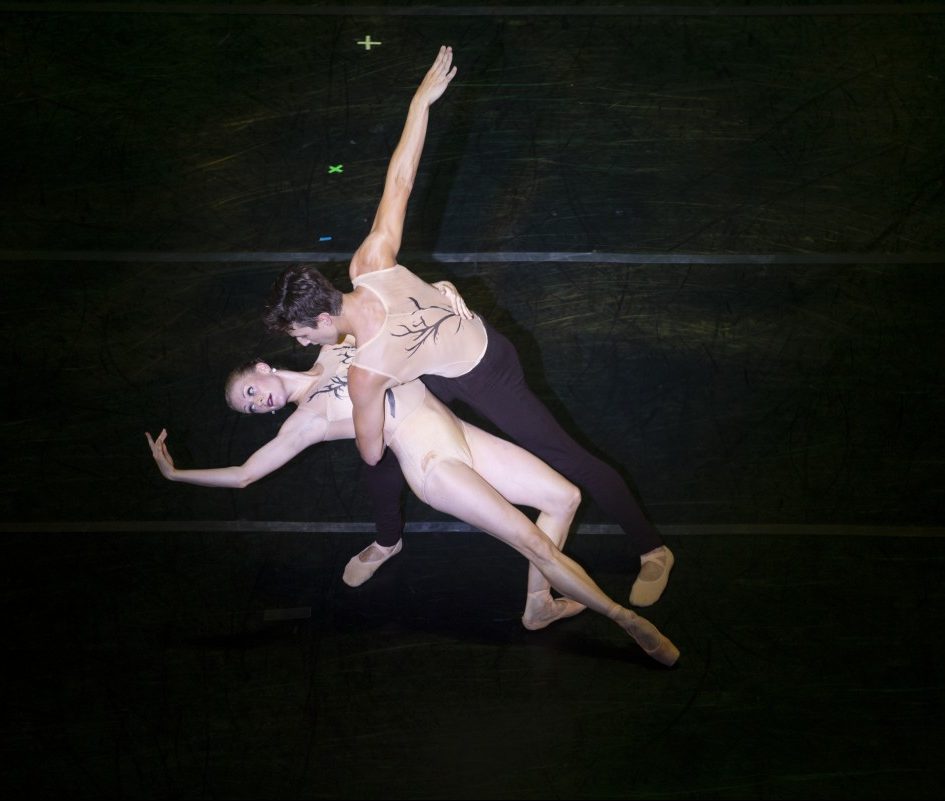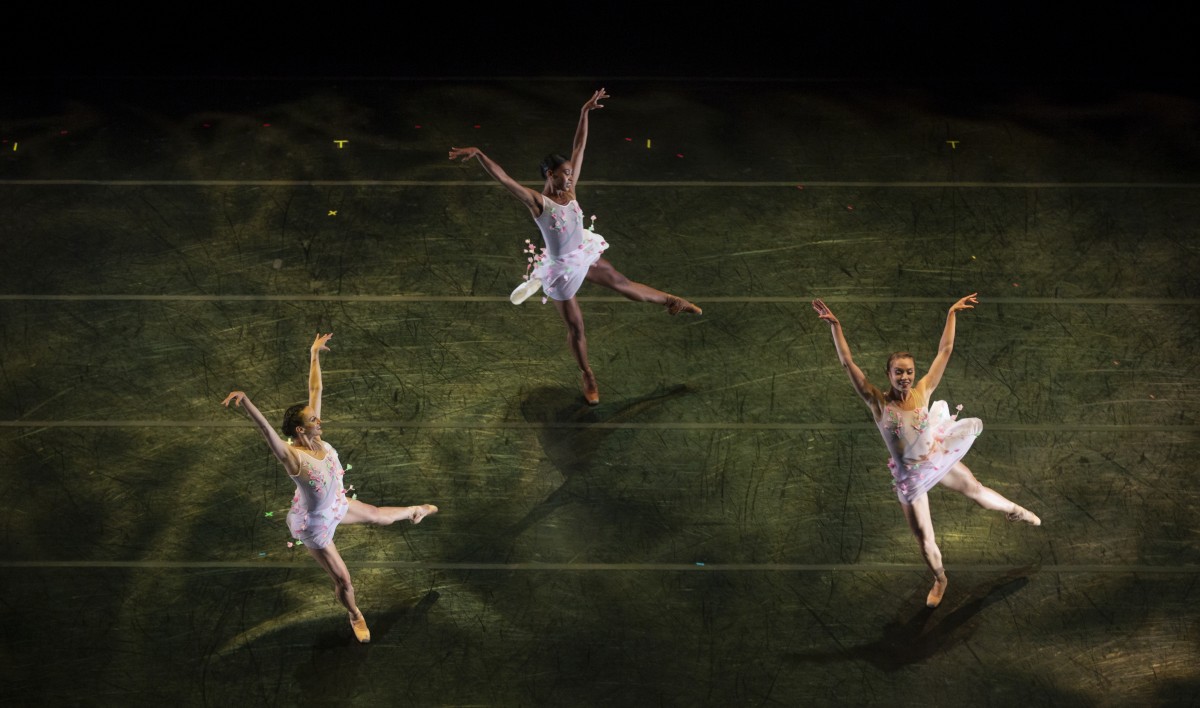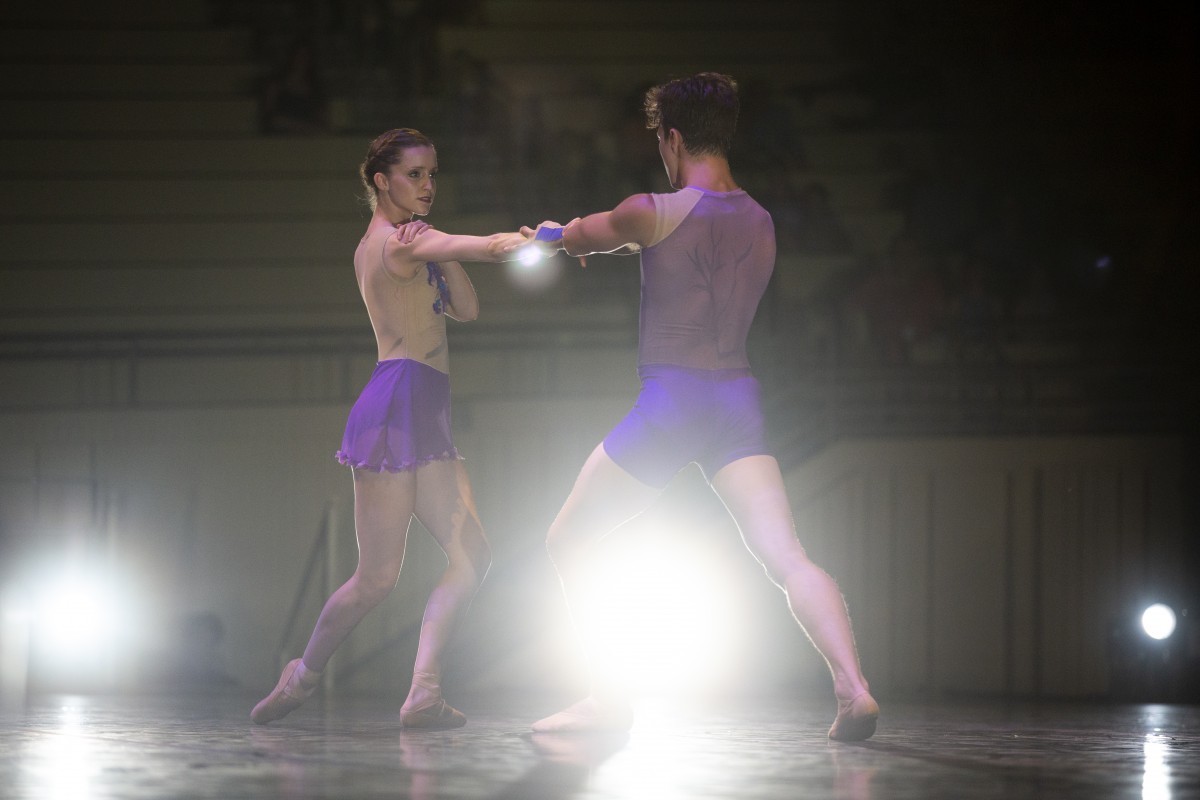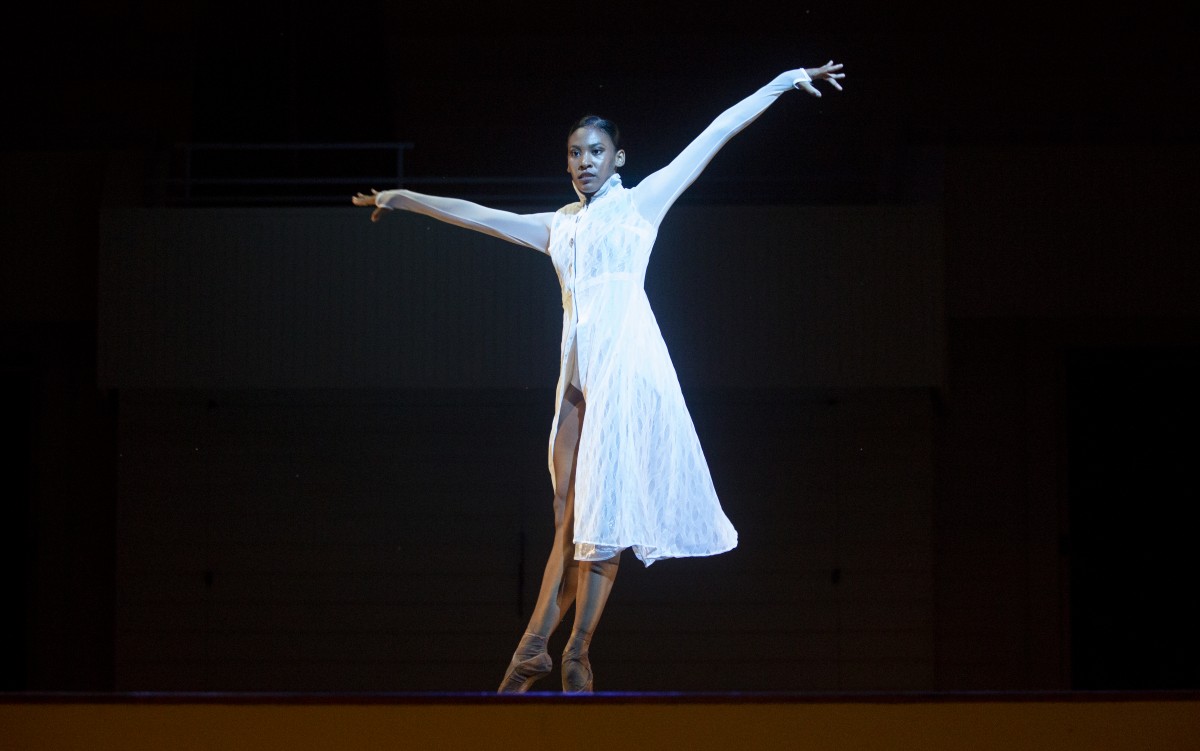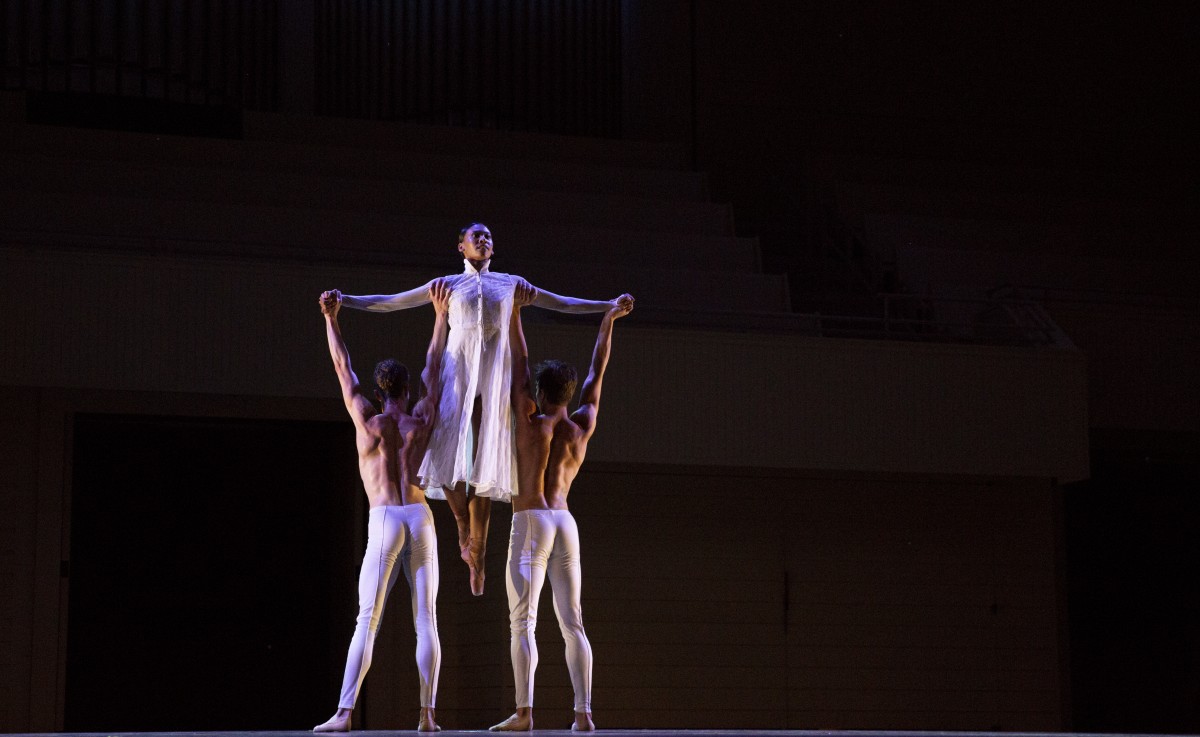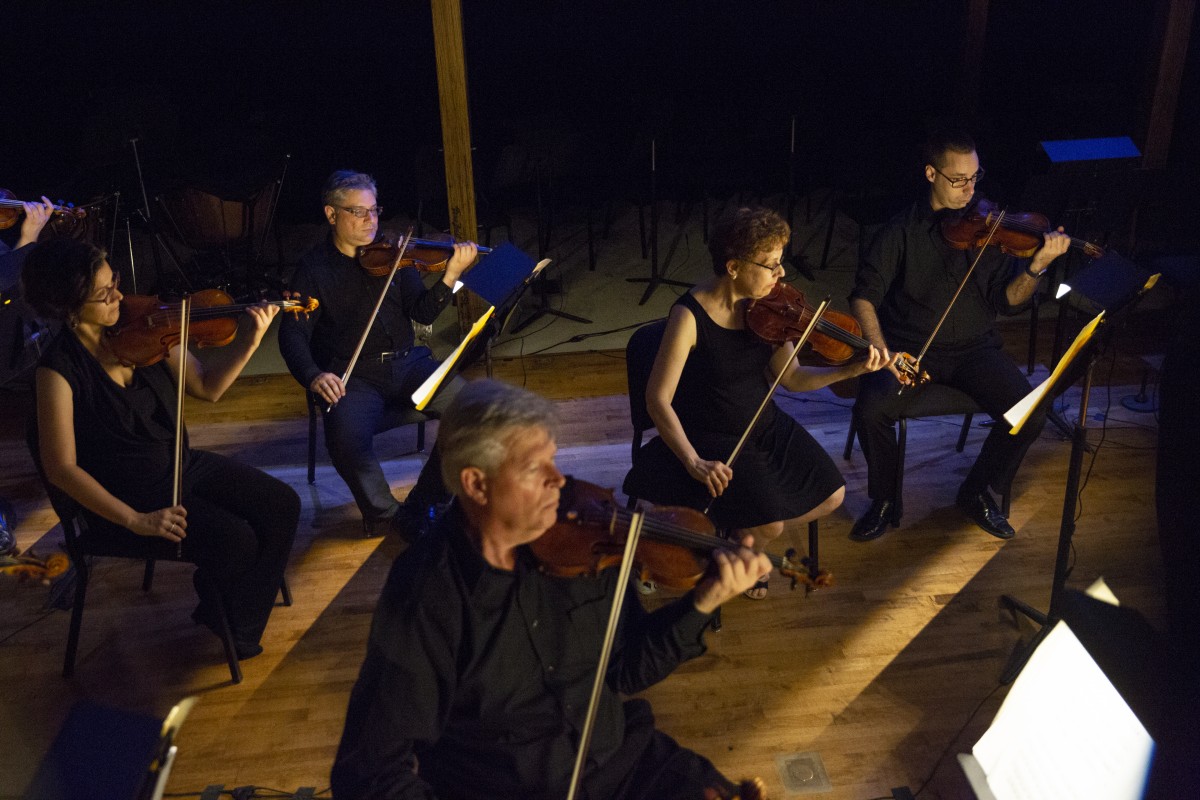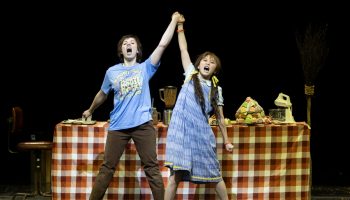Review by Anthony Bannon
The elements of the seasons had their way with us Thursday evening on July 5, in the Amphitheater, in this, the summer to simmer — all of us awaiting the cooling declarations of deep base thunder and bold light strikes that, indeed, marked the end of an extraordinary performance of dance and music.
Yes, this evening with the Charlotte Ballet in collaboration with the Chautauqua Symphony Orchestra was a set-up for summer, as only Antonio Vivaldi can orchestrate, given his popular Four Seasons, background music for French King Louis XV and inspiration here.
The Charlotte Ballet is a special annual gift to Chautauqua — a relationship first established by the famed Jean-Pierre Bonnefoux, legendary principal dancer with the New York City Ballet.
“Four Seasons” closed the evening with a melodramatic proposition for the imagination: suggestions for the presence of spring birds and brooks and thunder and a meadow and all that grows there, then heightened by the dance of summer’s hot languor, a gentle west wind and the storms from the north, augers of the changing fall and winter’s harsh chill.
The powerful expectation of Vivaldi as balanced by the cunning curation of Pyotr Ilyich Tchaikovsky’s “Sonatina” from his Serenade for Strings in C major, which opened the evening, sans dance. The “Sonatina” is a deep assembly of strings, performed all standing save the celli, gathered in semi-circle on the ample Amphitheater stage, led by musical director and conductor Rossen Milanov in white suit. The stage design of the strings made their own statement, with no help from lighting, set full flush across the stage.
But the strings confirmed the tone for the evening, reaching deep inside their instruments to present swelling, long chords, ripened for pleasure, lush like nitrate film or a gravure print,beyond expectations, sumptuous like summer. And with little announcement, the strings built up upon themselves, growing in waves like a suspension bridge begun to ripple in a strong wind, growing in force like a tsunami. Powerful playing; great formal leadership.
And next, from Beethoven, within his ninth symphony, occasion for the sweep of a dancer’s arm and the proper touch, more layered than the vice of winter to come. This is the surprise invested in art and shared within nature, a heart-stopping acceleration and tightening, dancers seizing a life form, slapping at flies.
This unexpected delight is central to the wonder of the second movement, the Scherzo, from the legendary ninth symphony in D minor. The Scherzo’s quick announcement — in two tones from the strings, then repeated before a response from the tympany is like a growth pattern, like plants springing to life, quick as weeds: quick as all living things, say the Charlotte dancers, led by the company’s “Fabulous Three,” principally Alessandra Ball James, now with the group for 13 years, with Chelsea Dumas, the youngster with five years, and with Sarah Hayes Harkins, a 10-year veteran.
Their work plays fundamentals to fine art, those intense moments of delight in startling, sudden astonishment: dancers scratching, springing forth, gestures in accord with the scurrying whirligig of life, the orchestra rushing headlong, punctuated like thunder from the timpani, opening for gorgeous sweeps from the horns, sudden stop with the tympany, almost an auger of a rock ’n’ roll move that the Rolling Stones called “Tongue.”
Even summer itself would not have predicted the affective synthesis of live, practiced movement and sound set to this largesse of Beethoven, announced by Tchaikovsky, terms realized by Vivaldi’s familiar narration, called program music. Vivaldi even went so far in his program as to write poems for each season and interweave the word within the score.
Each season brought forth new combinations for the Charlotte company, now directed by Hope Muir as artistic director, an international leader, who steps in for the retired Bonnefoux. Winter is a play for Raven Barkley, three years with the company from the estimable Dance Theatre of Harlem. Choreographed by Sasha Janes, company veteran, the seasons open up, one to another like a string of pearls, each unit a studied part within the language of the whole, each part an element in the completion of the circle, or a part of another linear form, such as the vanishing point: circle and line, profound basic elements.
There is a royal announcement to the work, the great lift of spring, and out of respect, I expect, the stage remains empty for a long stretch. But in spirit it becomes filled. Not only with the regal procession of music, but also with a projected presence.
For the longest time, I have been reporting on The Dog, a creature I have not met, and who, with its hefty throated bark, seems to have retired. A thinner voice, but with far more sense of timing, has replaced, and made its announcement in sync with Vivaldi’s “Spring,” brilliantly giving its leave at Springs-end.
Just for the record.
It required Barkley and Juwan Alston to take us out, and how they did, en pointe, en masse, with leaps of jeté proportions and all in winter white — the entire company, nine women and nine men. Graced with lithe strength, Barkley commanded the stage, even against a strong thunder rumble. She and the company held the audience, but many chose a rushed exit to complete the compelling character of nature and nurture’s command.
Anthony Bannon studied dance criticism with Selma Jeanne Cohen of Dance Perspectives and Doris Hering of Dance Magazine. He directed George Eastman Museum in Rochester and the Burchfield Penney Art Center at SUNY Buffalo State. Bannon’s next book is William Coupon Portraits with Damiani Press, the trade edition on market in September.


